|
Extinction
As an anisotropic particle between crossed linear polarizing filters is
rotated in the plane of the stage by rotating the stage it
generally goes dark every 90 degrees, but not always. If the particle goes
dark (extincts) and has a characteristic morphology then its
"extinction position" can be said to be parallel to a characteristic
morphology (parallel extinction), bisect a characteristic angle
(symmetric extinction), or, if neither of those conditions are satisfied,
then it has oblique extinction. Some anisotropic materials
don't change on rotation of the stage. Mature cotton fibers are an example.
They have no extinction position. Other materials may darken
but not go extinct. Peristerites are an example. Some materials shade into
reddish, then bluish darker positions on rotation because
the extinction position for red and blue wavelengths are not aligned. Wood
fibers are a common example. Some particles consist of crystal
structures that produce unique extinction patterns, such as starch and some
minerals. Polymers often exhibit birefringence that results from
stress, dander is an example.
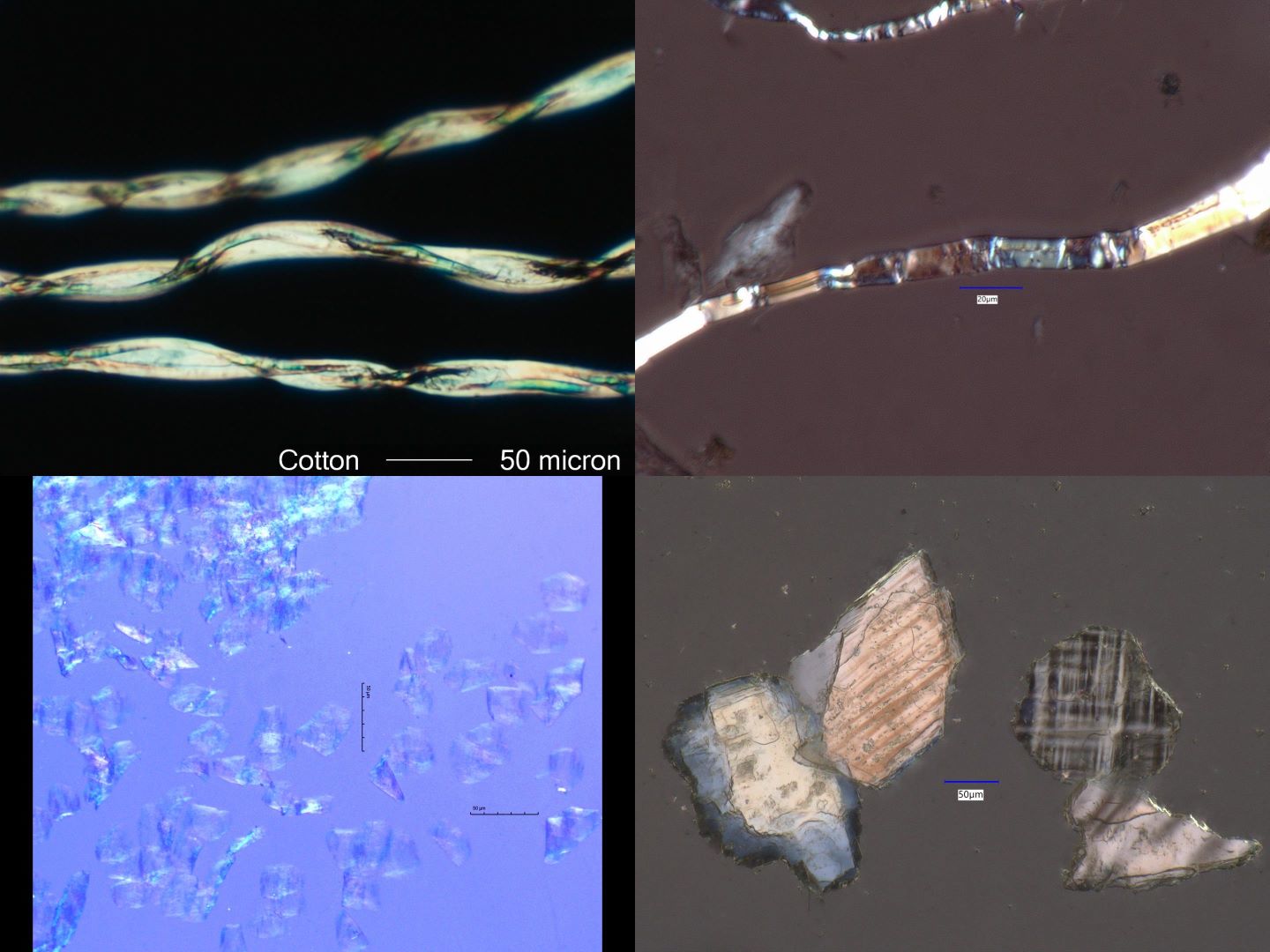
. . . No Extinction
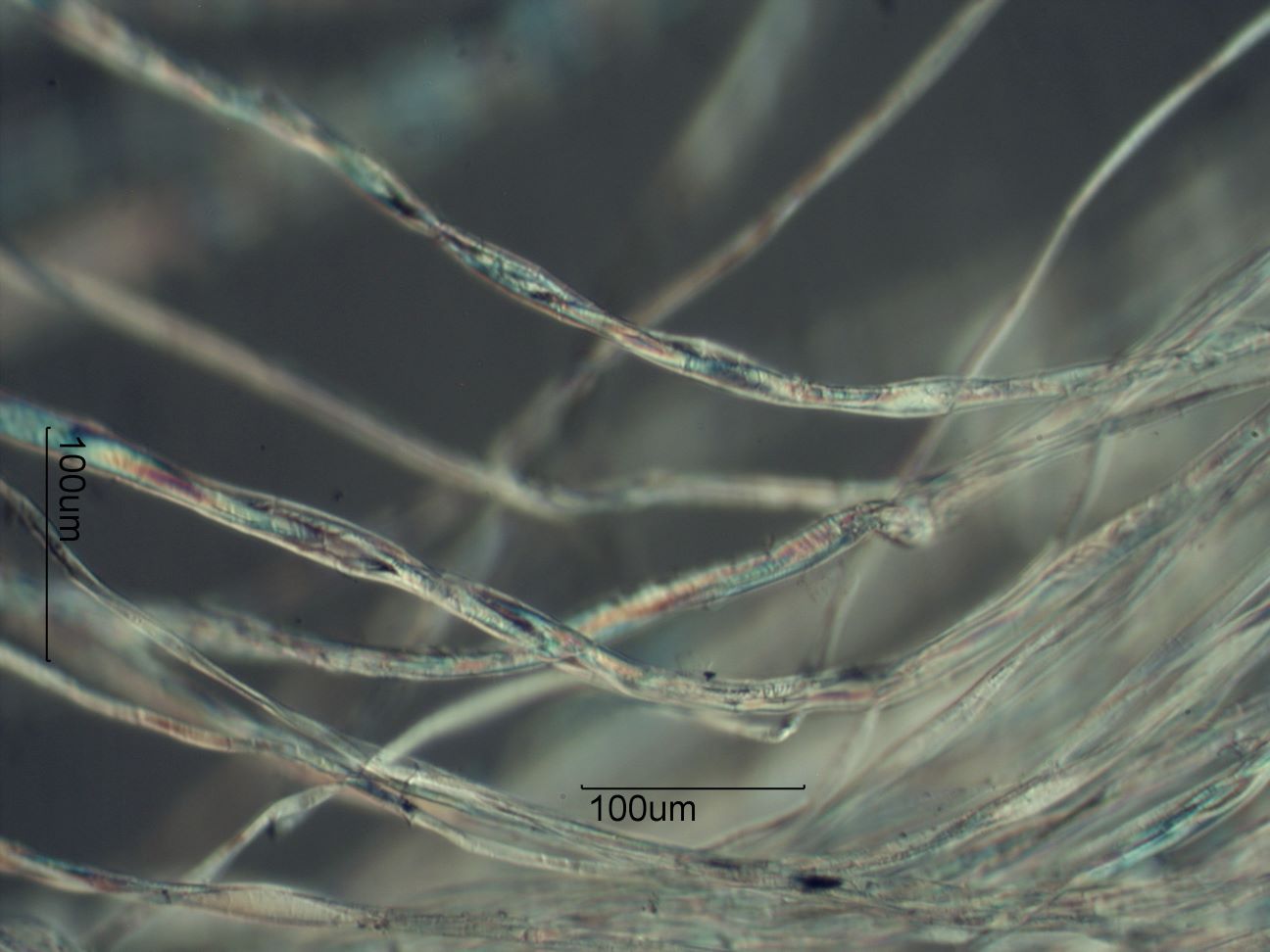

. . . Dispersion of Extinction
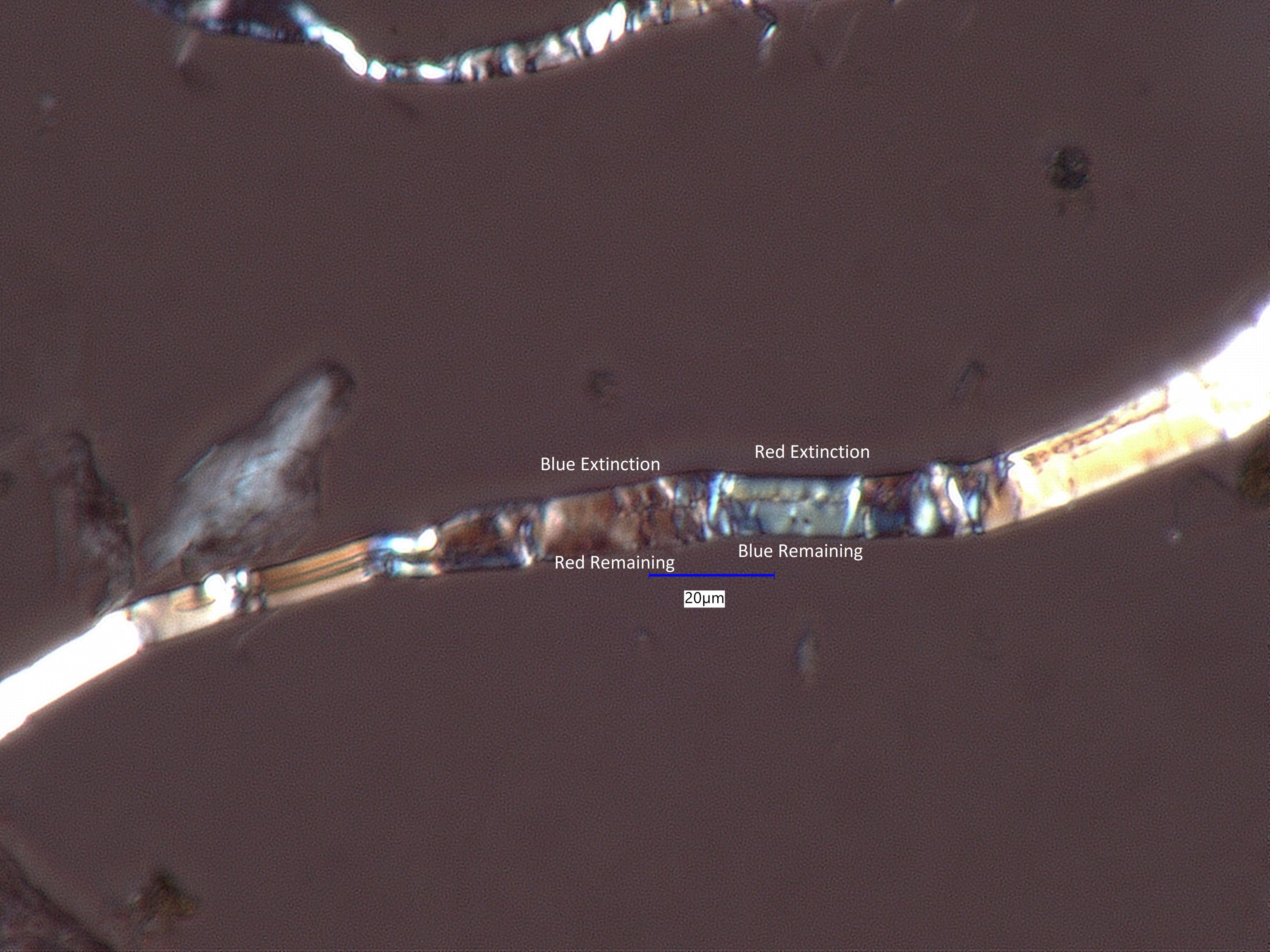
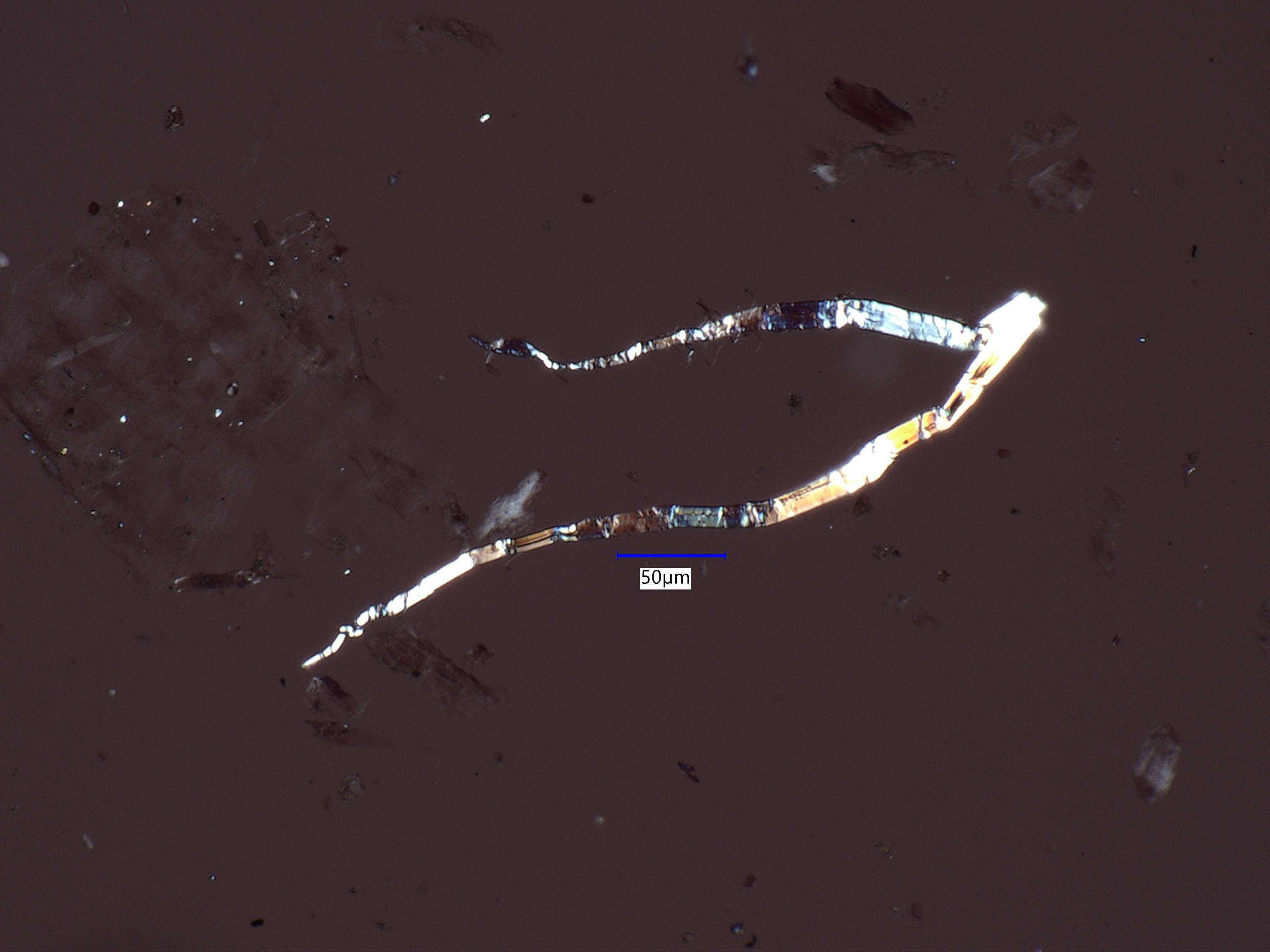
. . . Variable Extinction Due to Crystallite Orientation
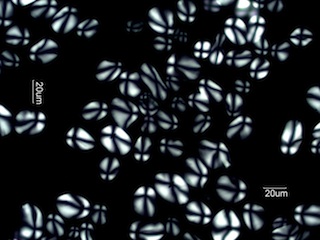

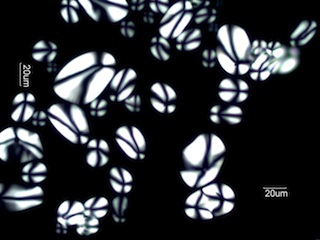
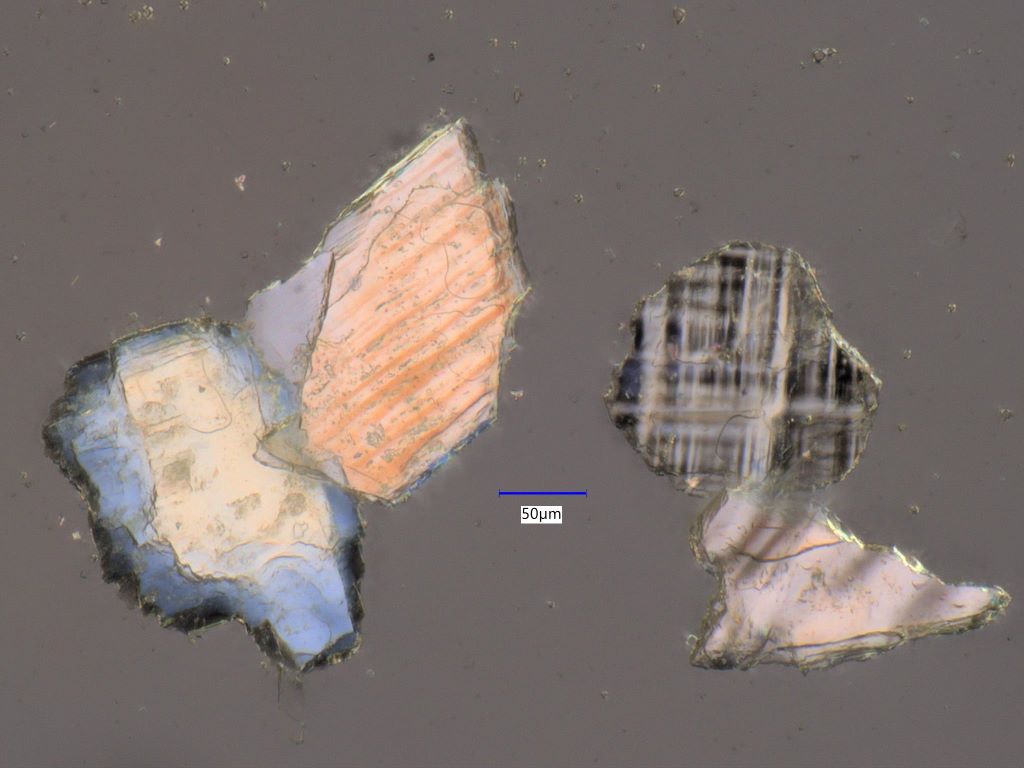
. . . Stress Field Extinction
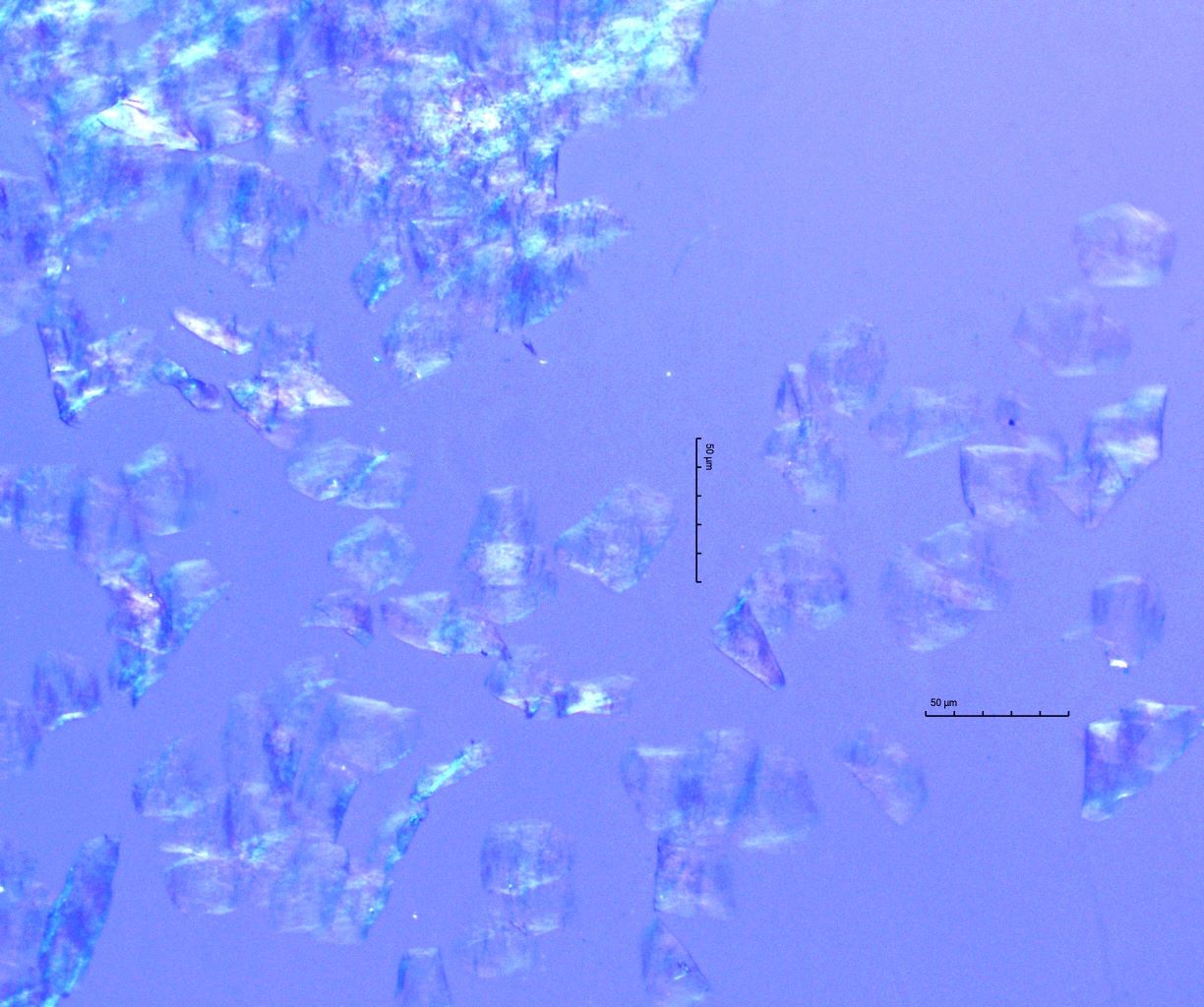
|